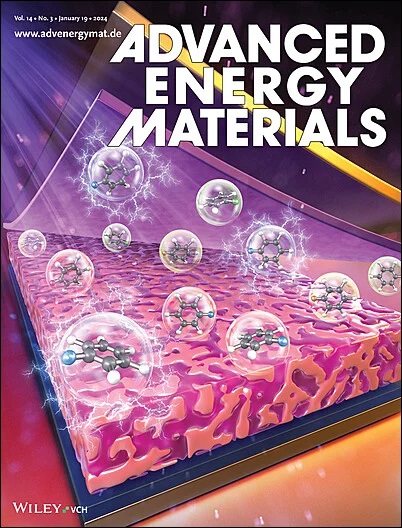水锌离子电池中稳定锌阳极的氟功能化化学
IF 24.4
1区 材料科学
Q1 CHEMISTRY, PHYSICAL
引用次数: 0
摘要
氟功能化材料以其强电负性、疏水性和形成稳定界面层的能力为特征,有效地缓解了关键挑战,包括枝晶形成、析氢和腐蚀,从而巩固了氟化学作为实用锌离子电池(zbs)的重要推动因素。尽管有这些优点,但对氟在阳极稳定中的多方面作用的系统综述仍然很少。这篇综述强调了氟化学在制作复杂的保护层、微调电解质和开发功能分离器方面的重要贡献。氟化保护层在控制亲锌位点、增强耐蚀性、调节Zn2+离子传输、加强约束效应和指导Zn(002)平面沉积方面具有重要作用。在电解质中,氟化锌盐、添加剂和共溶剂增强离子电导率,扩大电化学稳定电位窗口,并促进形成耐用的固体电解质间相(SEI)层,以抑制副反应。此外,氟改性的分离器平衡了亲疏水特性,提高了机械稳健性,有效地阻止了枝晶的形成。本文探讨了氟化相间结构-性质的相关性和现代分析方法,以了解氟在ZIBs中的作用。最后,进一步阐述了利用氟化学的当前障碍和未来战略,以促进安全、持久和可持续的ZIBs的发展。本文章由计算机程序翻译,如有差异,请以英文原文为准。
Fluorine‐Functionalized Chemistry Toward Stable Zn Anode in Aqueous Zn‐Ion Batteries
Fluorine‐functionalized materials, characterized by their strong electronegativity, hydrophobic properties, and capacity to form stable interfacial layers, effectively mitigate critical challenges, including dendrite formation, hydrogen evolution, and corrosion, thereby cementing fluorine chemistry as a vital enabler of practical Zn‐ion batteries (ZIBs). Despite these advantages, a systematic review of fluorine's multifaceted roles in anode stabilization remains scarce. This review underscores the essential contributions of fluorine chemistry in crafting sophisticated protective layers, fine‐tuning electrolytes, and developing functional separators. Fluorinated protective layers are instrumental in manipulating zincophilic sites, augmenting corrosion resistance, regulating Zn2+ ion transport, strengthening confinement effects, and directing Zn (002) plane deposition. Within electrolytes, fluorinated Zn salts, additives, and co‐solvents enhance ionic conductivity, broaden the electrochemical stability potential window, and facilitate forming durable solid‐electrolyte interphase (SEI) layers to inhibit side reactions. Moreover, fluorine‐modified separators balance hydrophilic and hydrophobic characteristics and improve mechanical robustness, effectively deterring dendrite formation. This review explores fluorinated interphase structure‐property correlations and modern analytical approaches to understand fluorine's role in ZIBs. Finally, the current obstacles and prospective strategies for harnessing fluorine chemistry are further delineated to advance the development of safe, long‐lasting, and sustainable ZIBs.
求助全文
通过发布文献求助,成功后即可免费获取论文全文。
去求助
来源期刊

Advanced Energy Materials
CHEMISTRY, PHYSICAL-ENERGY & FUELS
CiteScore
41.90
自引率
4.00%
发文量
889
审稿时长
1.4 months
期刊介绍:
Established in 2011, Advanced Energy Materials is an international, interdisciplinary, English-language journal that focuses on materials used in energy harvesting, conversion, and storage. It is regarded as a top-quality journal alongside Advanced Materials, Advanced Functional Materials, and Small.
With a 2022 Impact Factor of 27.8, Advanced Energy Materials is considered a prime source for the best energy-related research. The journal covers a wide range of topics in energy-related research, including organic and inorganic photovoltaics, batteries and supercapacitors, fuel cells, hydrogen generation and storage, thermoelectrics, water splitting and photocatalysis, solar fuels and thermosolar power, magnetocalorics, and piezoelectronics.
The readership of Advanced Energy Materials includes materials scientists, chemists, physicists, and engineers in both academia and industry. The journal is indexed in various databases and collections, such as Advanced Technologies & Aerospace Database, FIZ Karlsruhe, INSPEC (IET), Science Citation Index Expanded, Technology Collection, and Web of Science, among others.
 求助内容:
求助内容: 应助结果提醒方式:
应助结果提醒方式:


